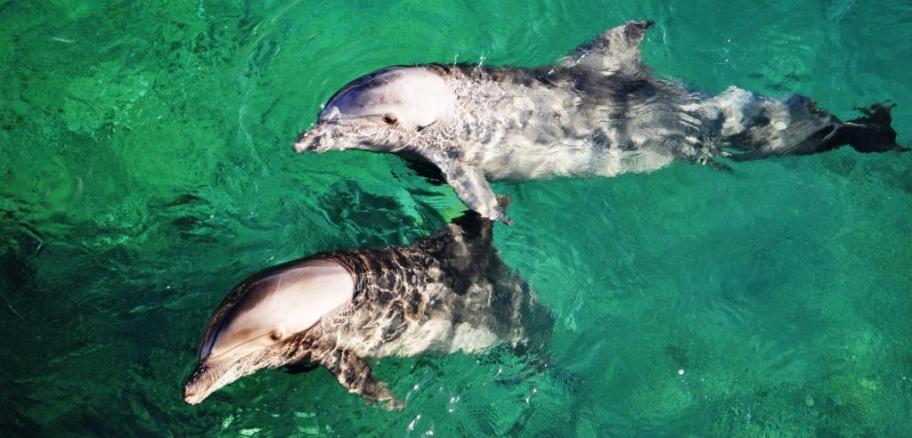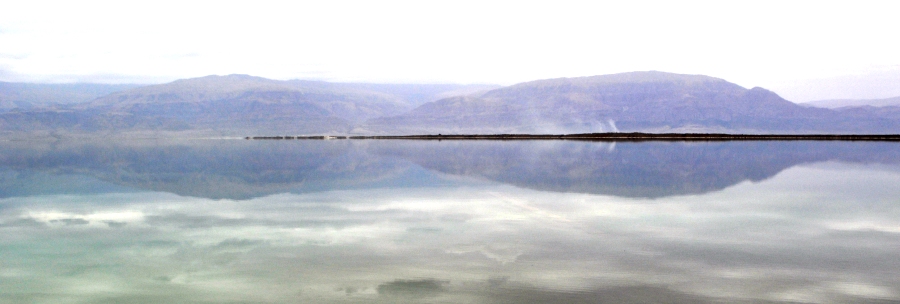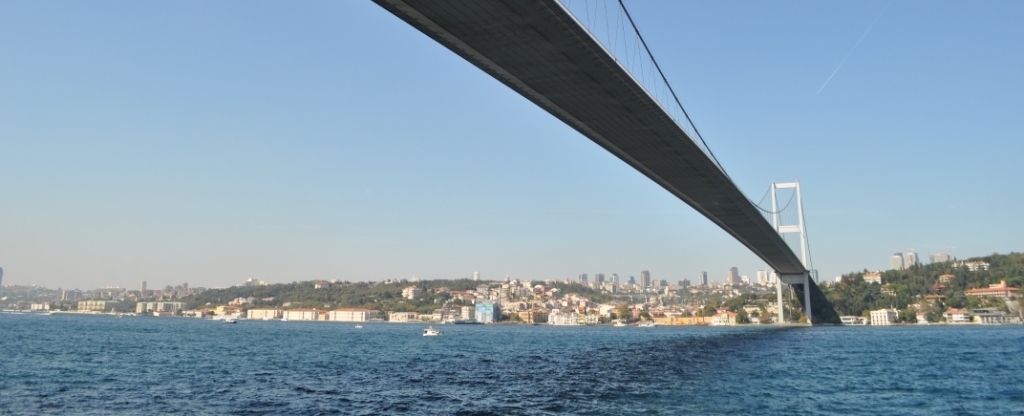The dolphin is swimming so close that I could reach out and touch it, and it looks much larger than I had expected. I remind myself that being underwater has a magnification effect; things appear a third larger than they are. Even so, this toothsome animal looks a good 10 feet long — which is entirely possible since adult bottlenose dolphins can range from between about 6 feet to nearly 16 feet in length and weigh between 300 and 1300 pounds.
I don’t touch it, though: That’s one of the rules here at Israel’s Dolphin Reef in the Red Sea resort city of Eilat at Israel’s southern tip. The dolphins are semi-wild; they are not bribed with food to come close to us divers. We’re simply allowed into their habitat; the rest is up to them.
In Your Bucket Because…
- Swimming with dolphins is a popular activity, but it is controversial. This is one center where the animal’s welfare is obviously paramount.
- You get to dive the Red Sea and swim with dolphins at the same time.
- Good for families, divers, snorkelers, and animal lovers.
Dolphin Reef: A Different Kind of Dolphin Park
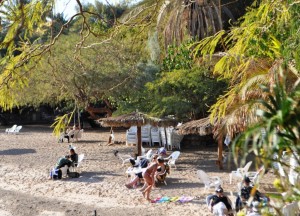
Located on the road to the Egyptian border, a few minutes south of the main hotel resort strip in Eilat, Dolphin Reef seems a world away from the busy glitzy resort area. The facility is an interesting combination of eco-park, beach, restaurant and bar, with a laid-back, homemade eco-vibe including a series of meditative spa-like relaxation pools (available for a limited number of bookings at a time) where visitors can float and chill out in peace and quiet.
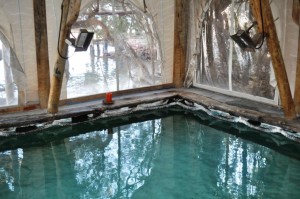
Out in the dolphin’s enclosure, there are no hoops for dolphins to jump through, no circus shows, no choreography. But the dolphins do respond to feeding cues: Each has been trained to recognize a particular call, although it is up to the dolphin whether or not to respond. While they are feeding the dolphins, the handlers talk to whoever gathers around to watch. The dolphins can come and go: There are plenty of naturally occurring fish for them to catch themselves if they like.
Snorkeling and Diving with the Dolphins
A limited number of divers and snorkelers are allowed to enter the dolphin’s habitat each day at set times. Each diver has a personal guide, and the rules are simple: Stay on one side of the handler at all times, don’t touch the dolphins (although it’s fine if the dolphins want to nose or brush against us). And, it should go without saying, no grabbing onto fins or hitching a ride.
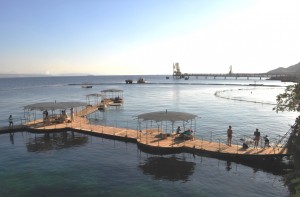
Indeed, there were no guarantees that we’d interact with, or even a see, a dolphin: The enclosure is large, and the dolphins can come and go where they want. Each pair of divers headed out to a different part of the enclosure to see what happened, and after a while, the dolphins, curious and playful, started coming around swimming upside down, circling around, pirouetting above and below. Snorkelers have a similar experience, only they have to stay on the surface.
Another group that has the opportunity to interact with the dolphins is handicapped children, who participate in individualized therapy programs that take place in the morning before the facility is open to the public. Children with a variety of conditions – learning difficulties, physical injuries, psychological issues, autism – work with therapists in programs individually designed to address their needs. As with the divers, dolphins are free to interact with the children — or not — and, as with the divers, mostly, they do.
The Captive Dolphin Controversy
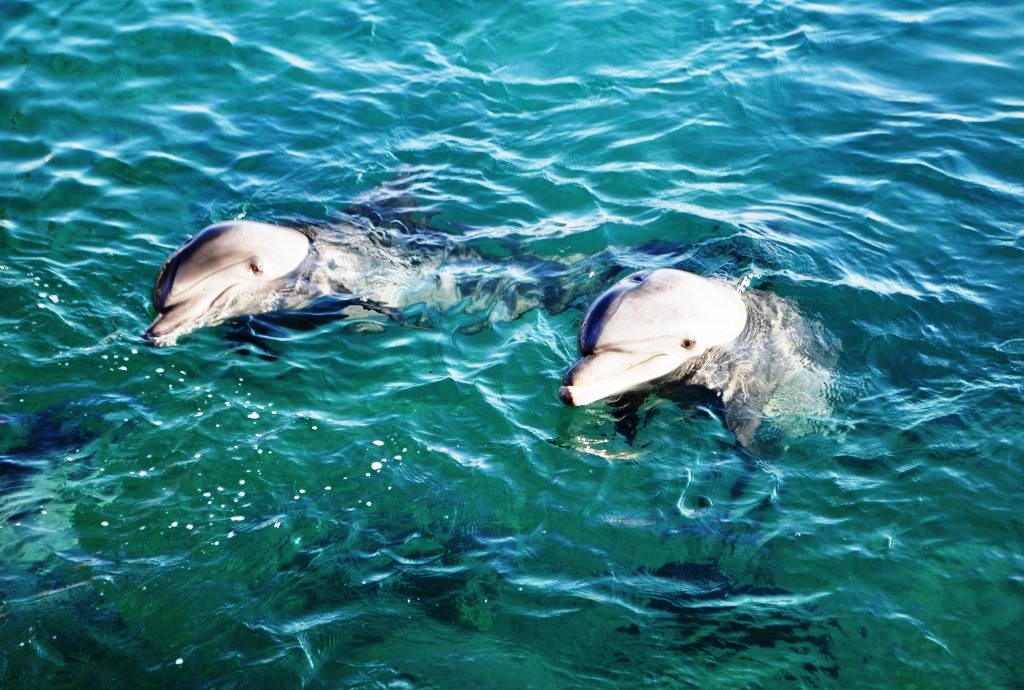
Dolphin Reef is not without its critics. In its 82-page report, The Case Against Marine Mammals in Captivity, the Humane Society of the U.S.A and the World Society for the Protection of Animals issue what is essentially a blanket condemnation of all captive oceanic mammals facilities. The document addresses sea pens, dolphin-human interaction, the capture of wild dolphins, dolphin-human programs used as therapy for handicapped children, and dozens of other issues. The authors see no meaningful difference between a laid back semi-natural facility such as Dolphin Reef, where the dolphins interact on their own initiative, and a filthy overcrowded abusive enclosure or a circus-like artificial pool. The bottom line, they say, is that dolphins should not be in captivity.
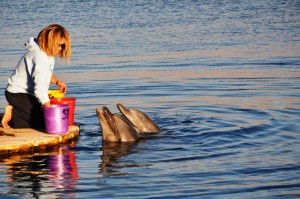
Interestingly, Dolphin Reef agrees: For its first six years, it ran an “Open Sea” project where the dolphins were allowed to come and go at will, entering the open sea whenever they liked. However, it turns out that semi-habituated dolphins are prone to approaching boats and humans for food, and humans are prone to teasing, taunting, and sometimes even tormenting dolphins. The dolphins sometimes responded aggressively, or returned to the enclosure injured; on occasion, even, with bottles sticking out from their blowholes. As a result, according to Dolphin Reef, in 2002 marine authorities forced them to close the gate. Today, the dolphins enjoy a large, natural habitat, but they are not free to leave except if the gates are opened during exceptional circumstances such as a storm that could could stress, panic, or injure a trapped dolphin. In the Human Society’s black and white presentation, Dolphin Reef is clearly one the wrong side of the line, despite its original intentions.
However in a world of gray, the issue is much less clear: People who experience close encounters with wildlife are more likely to contribute to wildlife conservation programs and environmental causes. In addition, on almost every point: of contention — enclosure size and quality, ability of the dolphins to choose their level of human interaction, ability of the dolphins to form their own bonds, lack of circus-like training and “dolphin shows,” availability of a natural food supply, not allowing visitors to touch the dolphins — it seemed to this visitor, at least, that Dolphin Reef got it right.
Practicalities
- Book in advance to dive, snorkel, or use the relaxation pools: This avoids your having to pay a separate entrance fees, and guarantees your time slot, especially in the busy summer months.
- There are two types of dives: Guided dives for certified divers, and introductory dives for people (including children over the age of 8) who are not certified.
- Scuba and snorkeling equipment is available for rent.
- Scuba Diving certification classes are available here.
Links and content checked and content republished in 2020
